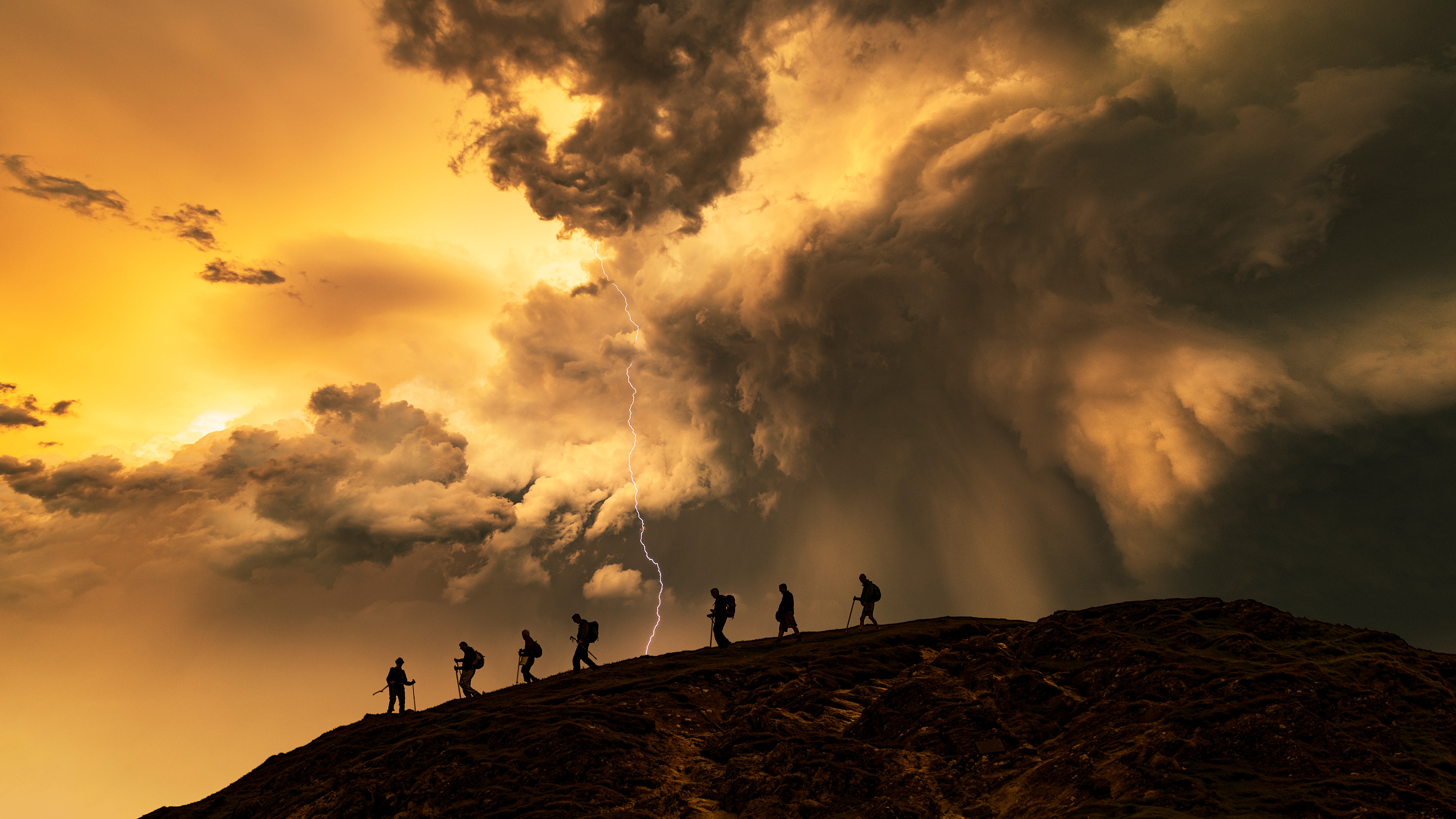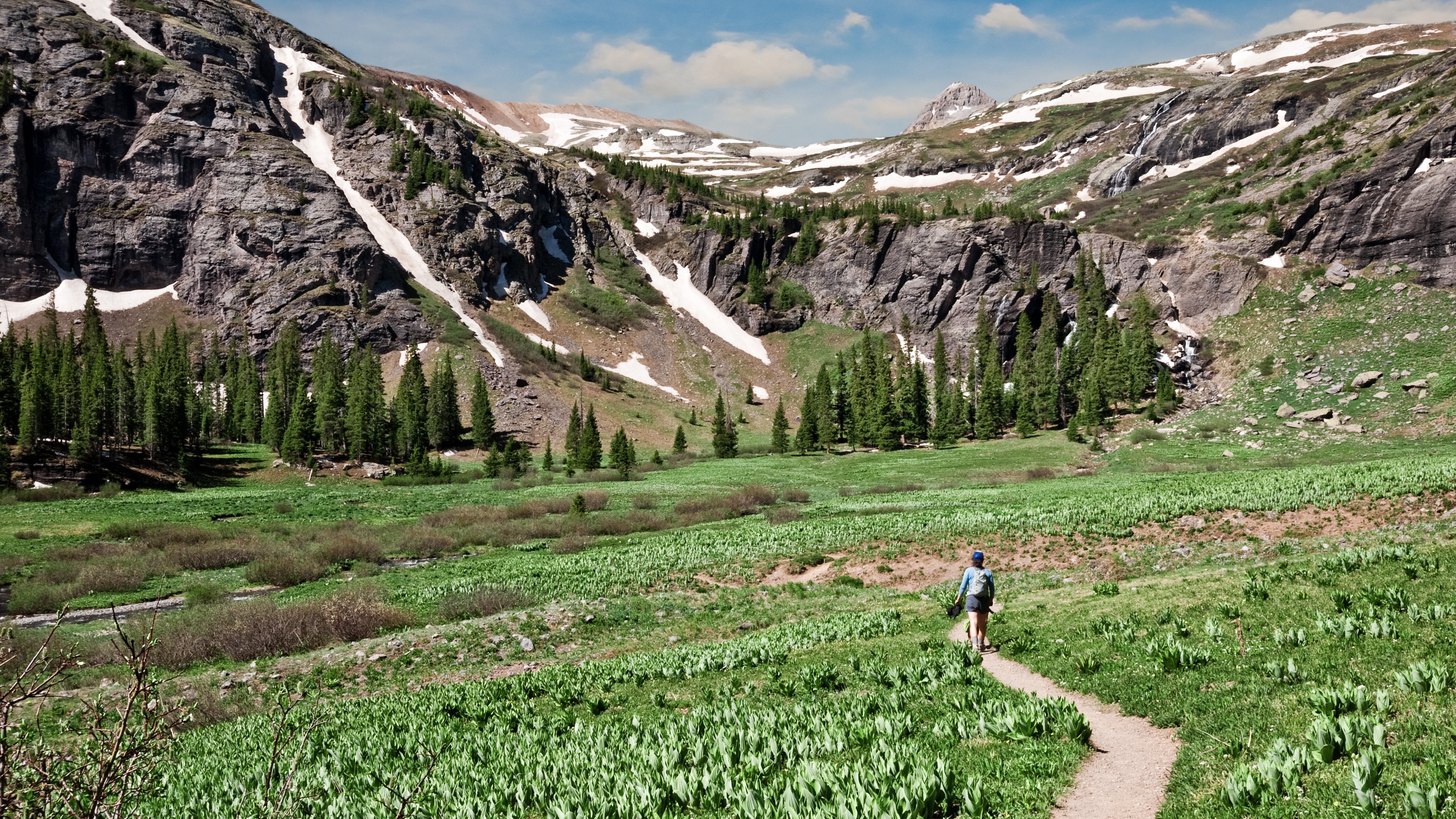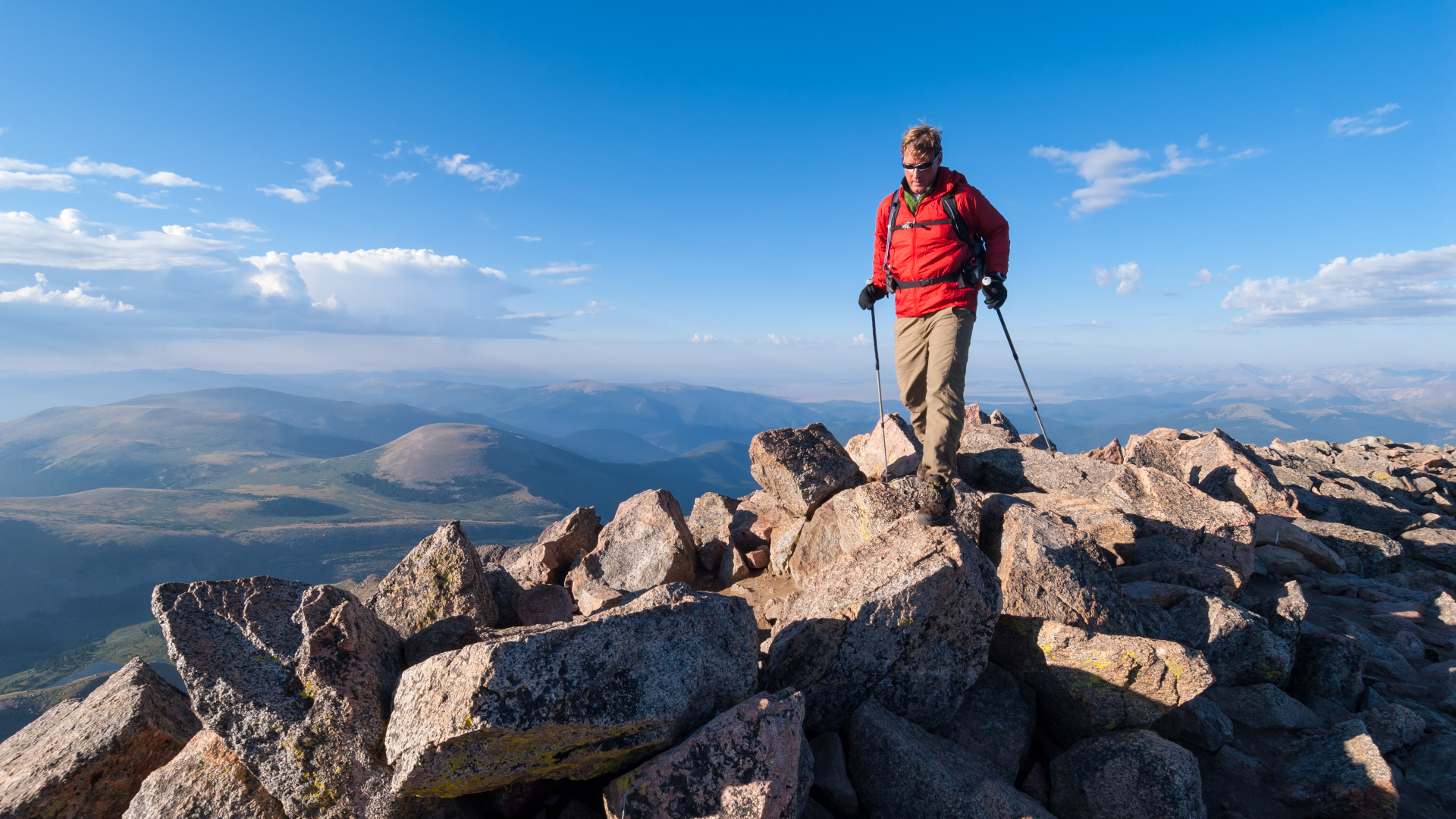What causes afternoon thunderstorms in Colorado’s Rockies – and what does it mean for hikers?
We explain this weather anomaly, and how to stay safe during spring and summer hiking in the Rockies

Winter’s slow demise in the Colorado Rockies means that in the coming months, our beloved hiking trails will slowly reappear after being buried in feet of snow for months. By June, you can pack your snowshoes away and dust off your hiking boots for walking season, but once you hit the trail, there’s a new hazard in the place of snow and ice – and no, we’re not talking about bears.
Afternoon thunderstorms are a regular part of Rocky Mountain living in the spring and summer months, and for anyone who likes to get up above treeline, their existence should never be far from your mind. My friend Kelly learned this when she was hiking Notch Mountain, a 13er near Vail, and her long hair started to stand on end. Luckily, she was able to hightail it out of there before things got worse, and I was glad I hadn’t joined her on that particular hike.
Thunderstorms can happen anywhere if the right conditions are present, but they’re most frequent in tropical and subtropical areas where there are lots of warm, humid conditions to brew some lightning – it’s no surprise then that Florida usually leads the way in the US, with up to 100 thunderstorm days each year, according to Penn State’s Department of Meteorology and Atmospheric Science. In the Midwest, that’s more like 40 to 50 thunderstorm days per year, which makes sense, considering those states tend to see lots of hot, humid weather.
As you get further north and closer to the coasts, there can be as few as five thunderstorm days per year – why, then, does arid Colorado (and New Mexico) present as many as 5,350 lightning strikes a day in July??

Why does Colorado have so many afternoon thunderstorms?
As the National Oceanic and Atmospheric Administration explains, the creation of lightning is a complicated process, but in essence, there are three fundamental ingredients required for a thunderstorm to take place: warm surface air temperatures that are at least in the 60s, moisture, and rising air.
The first part of that equation is simple, as daytime highs in the 60s or higher become common in the Colorado mountains as early as May. But what about moisture?
Colorado is not known for its humidity, but as CBS News explains, water vapor is usually brought to the state via winds blowing from the Gulf Coast. Dew point, which represents the amount of water vapor in the air, is highly variable in Colorado, so while it can sometimes be high enough to produce storms with rain and hail, we’re more likely to get so-called "high-based" or "dry thunderstorms" which consist mostly of lightning and wind.
All the latest inspiration, tips and guides to help you plan your next Advnture!
Finally, while the sun heating the ground causes warm air to rise in any climate, known as convection, Colorado’s mountain topography assists in the final element of rising air. The upward slope of the terrain helps that warm air flow upward where it meets with colder air, producing the perfect conditions for an afternoon thunderstorm, even without a major weather front moving in.

What Colorado hikers need to know about afternoon thunderstorms
If you’re hiking in Colorado in the spring or summer, you need to know that thunderstorms can happen most days, especially at high altitudes, and they’re very dangerous. In 2015, 16 hikers were struck and injured by lightning and a dog was killed on Mount Bierstadt, a Colorado 14er. In that case, the lightning struck late morning, which is very early, and the hikers were well above treeline, which is at roughly 11,000 feet in Colorado. If you’re hiking in the Colorado Rockies this spring or summer, take the following precautions to ensure you remain safe.
1. Check the weather
It’s vital to check the weather forecast before you head up above treeline. Make sure you look at the hourly forecast – often, there will be a small risk of thunderstorms in the afternoon and you’ll want to hike in the morning. If there’s a substantial risk of thunderstorms, change your plans and hike lower.
2. Hike early
Though in places like the Midwest, nighttime thunderstorms aren’t uncommon in the summer, Colorado’s storms tend to roll in during the afternoon, but that can be as early as one minute past noon. This means you need to plan your hike to ensure that at minimum, you’re back below treeline before the risk increases.
You’ll need to know how long and difficult the hike is and how long it’s likely to take you so you can calculate what time you need to be off the summit, but for many 14ers, this means heading off from the trailhead by at least 6 a.m. Remember that the terrain above treeline can often be difficult, involving boulder fields and scree, so you'll need to leave extra time. On the plus side, you can be curled up on your couch by the time the storm rolls in.

3. Get below treeline
You’ve probably heard that lightning tends to go for tall objects like trees, and you might want to avoid them, but in Colorado it goes for taller objects first, like mountain summits. As Rocky Mountain National Park officials explain, mountain tops are the most dangerous area to be in during a lightning storm. If you are very close to treeline and see clouds forming in the distance, get back below treeline to stay safer. Don’t stand near an isolated tree, but huddle at the base of a cluster of lower elevation trees until the storm has passed, then head back to the trailhead.
4. Stay aware and know when to turn back
While you’re hiking, keep scanning the skies, particularly once you leave the shelter of treeline. A piercing blue sky doesn’t pose much risk, but if you see clouds forming on the horizon, you could be in imminent danger. Know when to turn back and get down to lower elevations quickly, even if it means you have to come back another day to see the summit. Learn more in our article on how to avoid getting struck by lightning when camping and hiking.
Julia Clarke is a staff writer for Advnture.com and the author of the book Restorative Yoga for Beginners. She loves to explore mountains on foot, bike, skis and belay and then recover on the the yoga mat. Julia graduated with a degree in journalism in 2004 and spent eight years working as a radio presenter in Kansas City, Vermont, Boston and New York City before discovering the joys of the Rocky Mountains. She then detoured west to Colorado and enjoyed 11 years teaching yoga in Vail before returning to her hometown of Glasgow, Scotland in 2020 to focus on family and writing.

